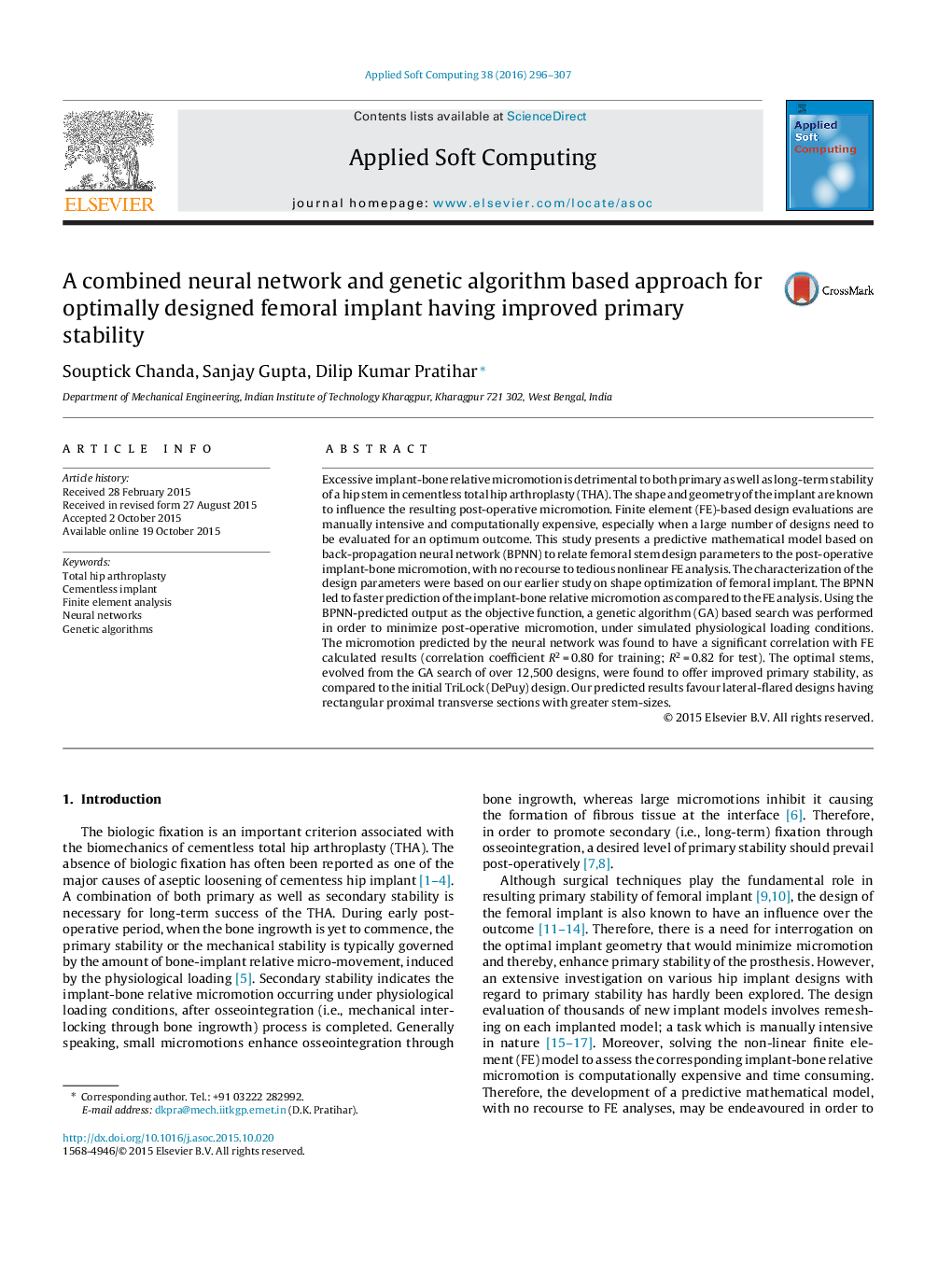| Article ID | Journal | Published Year | Pages | File Type |
|---|---|---|---|---|
| 494865 | Applied Soft Computing | 2016 | 12 Pages |
•It aims to design optimal femoral implant for better primary stability.•It uses a combined neural network and genetic algorithm-based approach.•Knowledge of problem domain has been represented using neural networks.•Optimization problem has been solved using genetic algorithms.
Excessive implant-bone relative micromotion is detrimental to both primary as well as long-term stability of a hip stem in cementless total hip arthroplasty (THA). The shape and geometry of the implant are known to influence the resulting post-operative micromotion. Finite element (FE)-based design evaluations are manually intensive and computationally expensive, especially when a large number of designs need to be evaluated for an optimum outcome. This study presents a predictive mathematical model based on back-propagation neural network (BPNN) to relate femoral stem design parameters to the post-operative implant-bone micromotion, with no recourse to tedious nonlinear FE analysis. The characterization of the design parameters were based on our earlier study on shape optimization of femoral implant. The BPNN led to faster prediction of the implant-bone relative micromotion as compared to the FE analysis. Using the BPNN-predicted output as the objective function, a genetic algorithm (GA) based search was performed in order to minimize post-operative micromotion, under simulated physiological loading conditions. The micromotion predicted by the neural network was found to have a significant correlation with FE calculated results (correlation coefficient R2 = 0.80 for training; R2 = 0.82 for test). The optimal stems, evolved from the GA search of over 12,500 designs, were found to offer improved primary stability, as compared to the initial TriLock (DePuy) design. Our predicted results favour lateral-flared designs having rectangular proximal transverse sections with greater stem-sizes.
Graphical abstractFigure optionsDownload full-size imageDownload as PowerPoint slide
